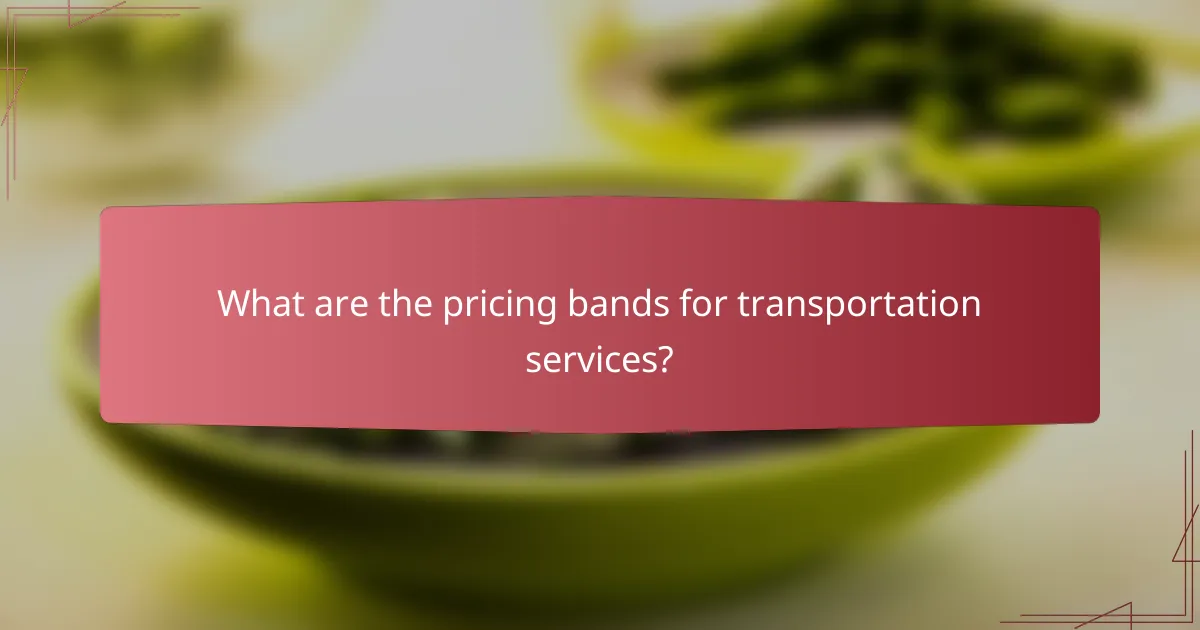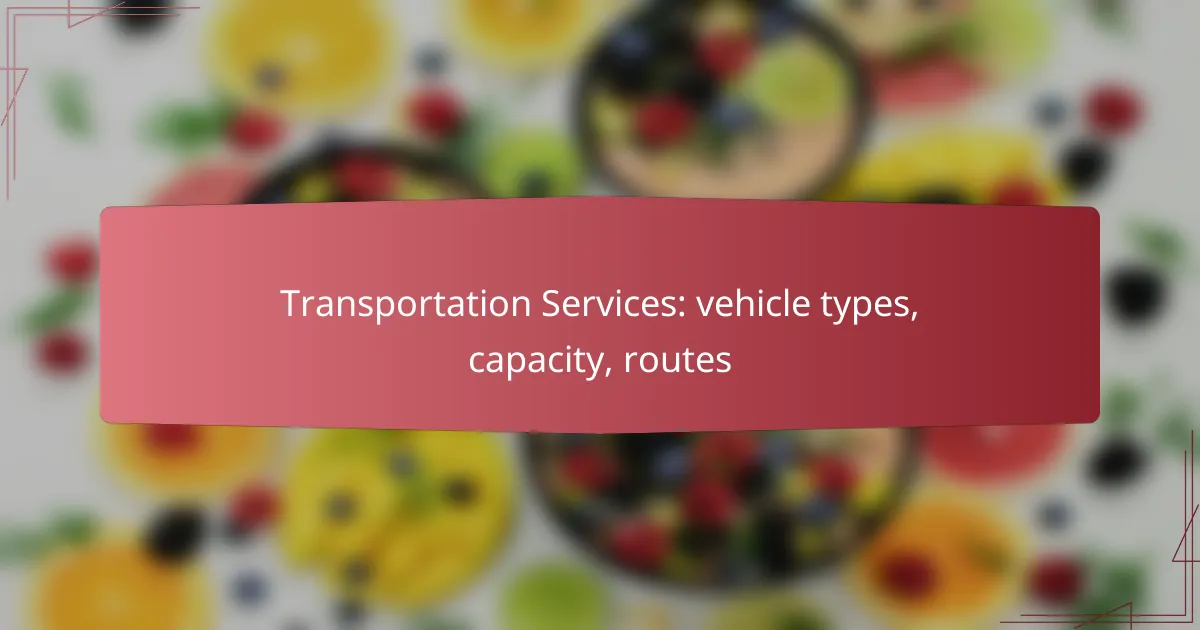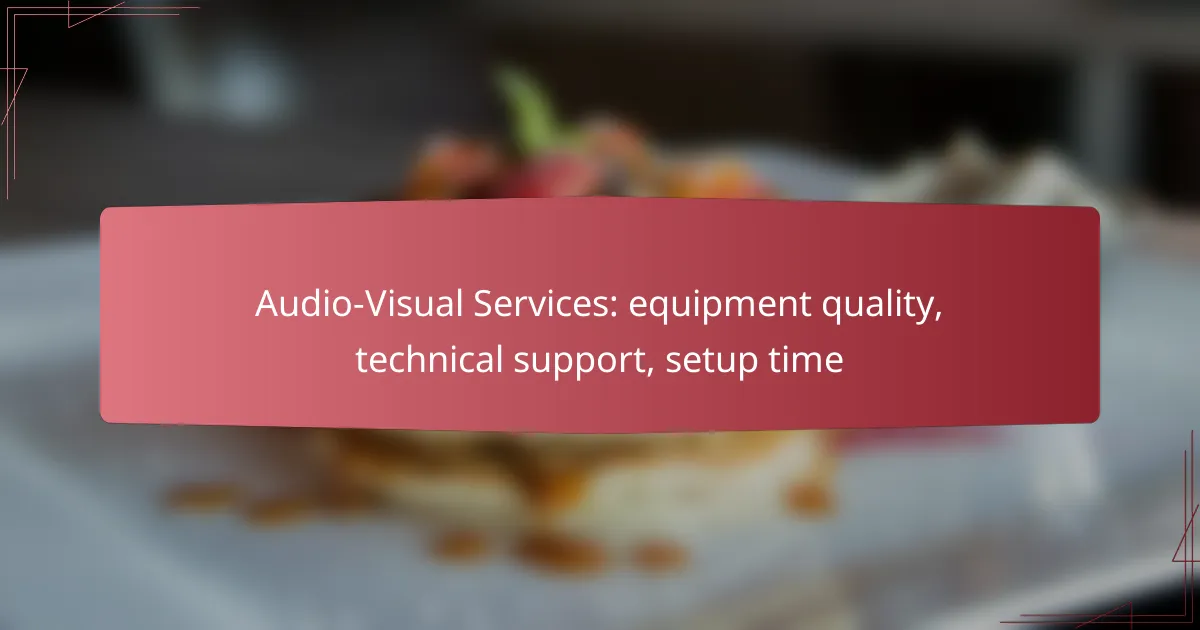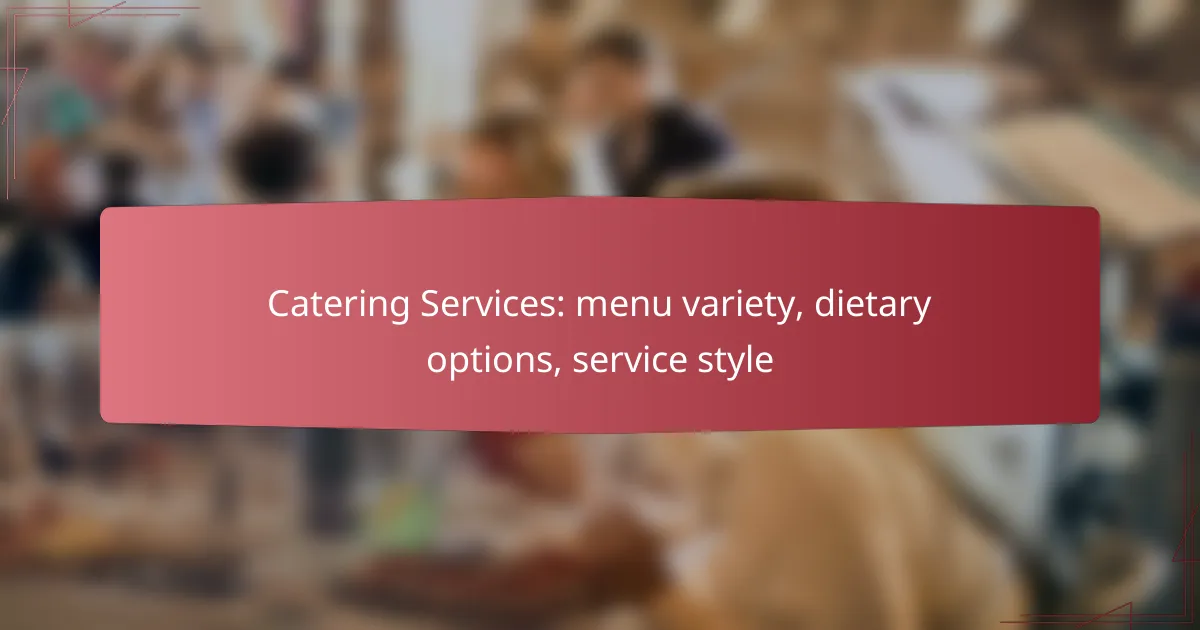London’s transportation services encompass a variety of vehicle types, including minibuses, coaches, taxis, and ride-sharing options, each designed to meet different travel needs. With varying capacities, these vehicles cater to groups of all sizes, ensuring that everyone can find suitable transportation. Additionally, the extensive network of routes covers essential destinations such as airports, city centers, and suburban areas, providing efficient travel solutions for both residents and visitors.

What types of transportation services are available in London?
London offers a diverse range of transportation services, catering to various needs and preferences. These include minibus services, coach services, taxis, ride-sharing options, and public transit, each with unique features and capacities.
Minibus services
Minibus services in London are ideal for small groups, typically accommodating 8 to 16 passengers. They are often used for private hires, corporate events, or school trips, providing a cost-effective solution for group travel.
When booking a minibus, consider the route, as many services offer flexible pick-up and drop-off points. It’s advisable to book in advance, especially during peak times, to ensure availability.
Coach services
Coach services are designed for larger groups, with capacities ranging from 20 to over 50 passengers. They are commonly used for long-distance travel, tours, and organized events, offering amenities such as reclining seats and onboard restrooms.
For coach hire, check for additional services like luggage handling and catering options. Booking ahead is recommended, particularly for popular destinations or during holiday seasons.
Taxi services
London’s taxi services include traditional black cabs and private hire vehicles, providing convenient transport across the city. Black cabs can be hailed on the street or booked via an app, while private hire vehicles must be pre-booked.
Fares for taxis are metered, with additional charges for late-night rides or extra passengers. Always confirm the fare estimate before starting your journey to avoid surprises.
Ride-sharing services
Ride-sharing services like Uber and Bolt are popular in London, allowing users to book rides through mobile apps. These services typically offer a range of vehicle types, from economy to premium options, catering to different budgets.
When using ride-sharing, be aware of surge pricing during peak hours, which can significantly increase costs. It’s wise to compare fares across different platforms to find the best deal.
Public transit options
London’s public transit system includes buses, the Underground (Tube), and trains, providing extensive coverage throughout the city. The Oyster card or contactless payment methods are recommended for seamless travel on public transport.
Buses and the Tube operate frequently, with services running from early morning until late at night. Familiarize yourself with the route maps and schedules to optimize your travel time and avoid delays.

What is the capacity of different vehicle types?
The capacity of different vehicle types varies significantly, impacting their suitability for various transportation needs. Understanding these capacities helps in selecting the right vehicle for group sizes and travel requirements.
Minibus capacity (up to 16 passengers)
Minibuses typically accommodate up to 16 passengers, making them ideal for small groups such as sports teams or corporate outings. They offer a balance between comfort and maneuverability, often featuring amenities like air conditioning and storage for luggage.
When considering a minibus, check for local regulations regarding licensing and insurance, as these can vary by region. It’s also wise to book in advance during peak travel seasons to ensure availability.
Coach capacity (up to 50 passengers)
Coaches can carry up to 50 passengers, making them suitable for larger groups such as school trips or tour groups. They provide spacious seating, onboard restrooms, and often include entertainment systems, enhancing the travel experience.
For coach rentals, consider the distance of travel and duration, as this can affect pricing. Additionally, inquire about the driver’s qualifications and the vehicle’s maintenance history to ensure safety and reliability.
Taxi capacity (up to 5 passengers)
Taxis generally accommodate up to 5 passengers, making them perfect for individual travelers or small groups needing quick transport. They are widely available in urban areas and can be hailed on the street or booked via apps.
When using a taxi, be aware of local fare structures, which may include base rates and additional charges for luggage or late-night rides. Always confirm the estimated fare before starting your journey to avoid surprises.

What routes do transportation services cover in London?
Transportation services in London cover a wide range of routes, catering to various needs such as airport transfers, city center travel, and suburban connections. These routes are designed to provide efficient and convenient options for both residents and visitors.
Airport transfer routes
Airport transfer routes in London primarily connect major airports like Heathrow, Gatwick, Stansted, and Luton to central locations. Services often include private cars, shuttles, and public transport options such as the Heathrow Express and Gatwick Express.
When booking an airport transfer, consider factors like travel time, cost, and convenience. For example, private transfers offer door-to-door service but can be more expensive than public transport options.
City center routes
City center routes are designed to facilitate travel within London’s bustling core, connecting key areas such as the West End, financial districts, and cultural landmarks. Options include buses, the Underground, and taxis, providing flexibility for different budgets and preferences.
Using public transport in the city center can save time and money, especially with Oyster cards or contactless payments. Be aware of peak hours, as services can be crowded during these times.
Suburban routes
Suburban routes extend from the city center to surrounding areas, offering access to residential neighborhoods and local attractions. These routes are serviced by trains, buses, and trams, making it easy to reach destinations outside the immediate urban area.
When traveling to suburban areas, check the frequency of services, as they may vary throughout the day. Off-peak travel can often provide a more comfortable experience with fewer passengers.

How to choose the right transportation service?
Choosing the right transportation service involves assessing your specific needs, including capacity, reliability, and pricing. By evaluating these factors, you can select a service that best fits your requirements and budget.
Consider passenger capacity
Passenger capacity is a crucial factor when selecting a transportation service. Depending on your group size, you may need a vehicle that accommodates anywhere from a few individuals to dozens. For example, a standard minibus can typically hold 10 to 15 passengers, while larger coaches can accommodate 50 or more.
When assessing capacity, consider not just the number of passengers but also the amount of luggage or equipment you may have. Ensure the chosen vehicle has sufficient space to avoid discomfort or damage to belongings.
Evaluate service reliability
Service reliability is essential for ensuring timely arrivals and departures. Look for transportation providers with a strong reputation for punctuality and customer satisfaction. Online reviews and ratings can provide insights into a company’s reliability.
Additionally, consider the company’s track record in handling delays or emergencies. A reliable service should have contingency plans in place, such as alternative routes or backup vehicles, to minimize disruptions.
Check pricing structures
Understanding pricing structures is vital for budgeting your transportation needs. Different services may offer various pricing models, such as per mile, per hour, or flat rates. Be sure to compare these options to find the most cost-effective solution for your journey.
Watch out for hidden fees, such as fuel surcharges or additional costs for extra stops. Request a detailed quote that outlines all potential charges to avoid surprises later on. Consider asking about discounts for larger groups or repeat bookings, which can help reduce overall costs.

What are the pricing bands for transportation services?
The pricing bands for transportation services vary based on vehicle type, capacity, and distance. Understanding these bands helps in budgeting for group travel and selecting the right service for your needs.
Minibus pricing (starting from £100)
Minibus pricing typically starts at around £100 for short distances or local trips. This option is ideal for smaller groups, usually accommodating 8 to 16 passengers, making it a cost-effective choice for events like family outings or corporate functions.
When considering minibus services, check for included amenities such as air conditioning, luggage space, and driver availability. Additionally, prices may increase during peak seasons or for longer routes, so it’s wise to book in advance to secure the best rates.
Coach pricing (starting from £300)
Coach pricing generally starts at approximately £300, catering to larger groups of 20 or more passengers. Coaches are suitable for longer journeys, such as school trips or corporate retreats, providing more comfort and space than minibuses.
When selecting a coach service, consider factors like onboard facilities, including restrooms, Wi-Fi, and refreshments. As with minibuses, early booking can help avoid price surges during busy travel periods, ensuring a smooth and economical travel experience.



